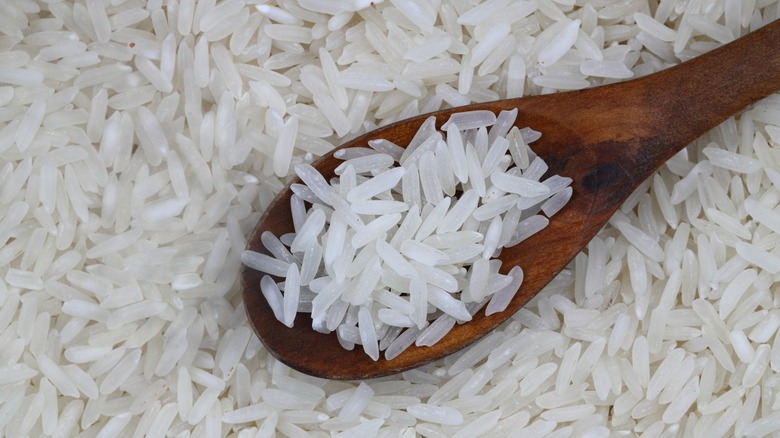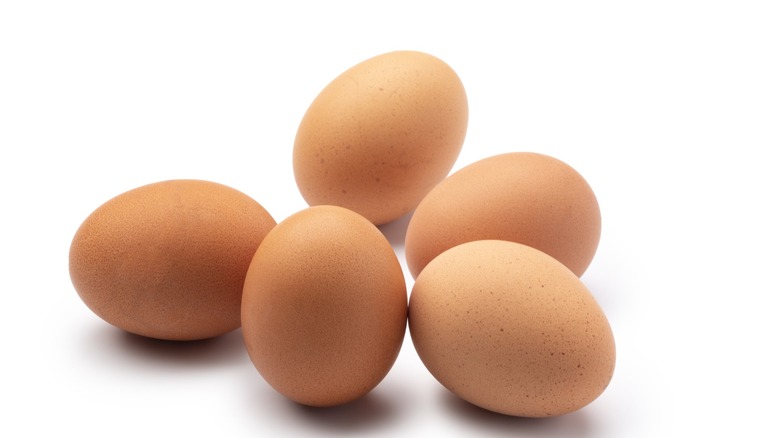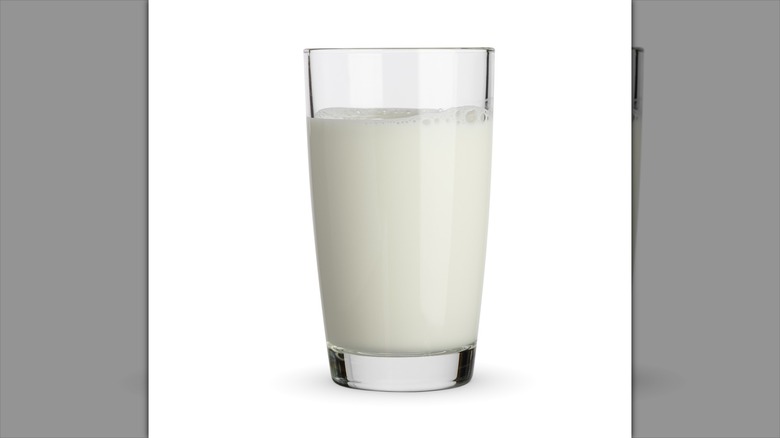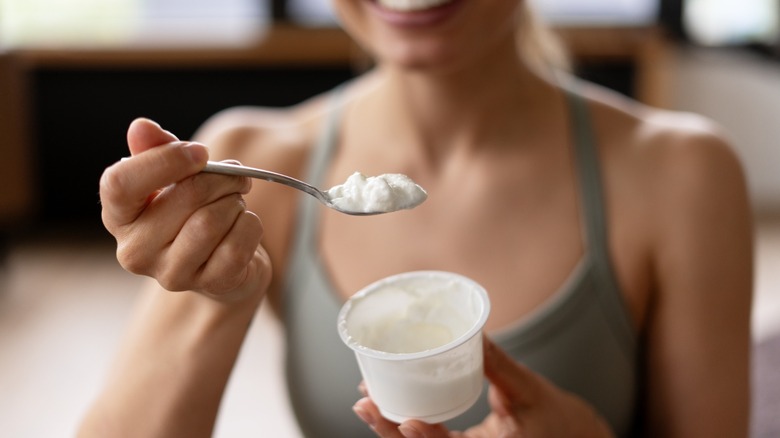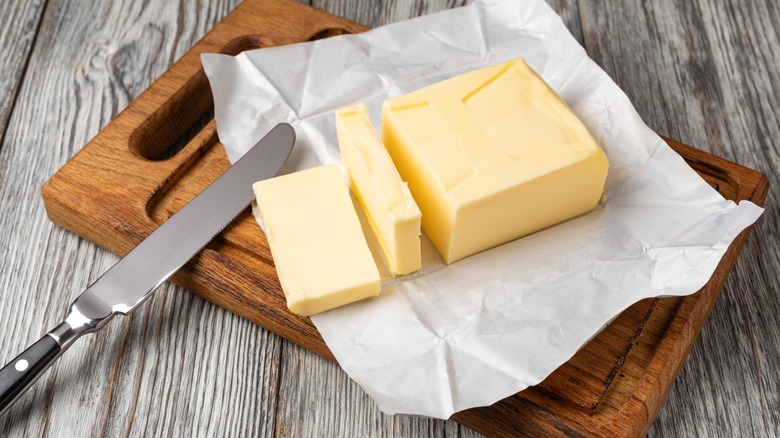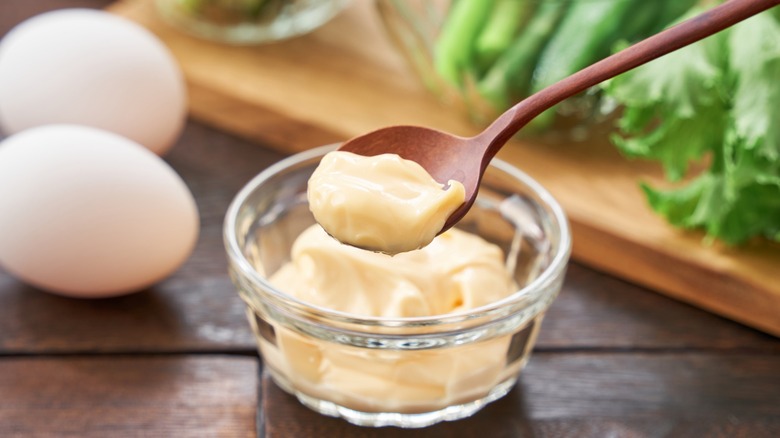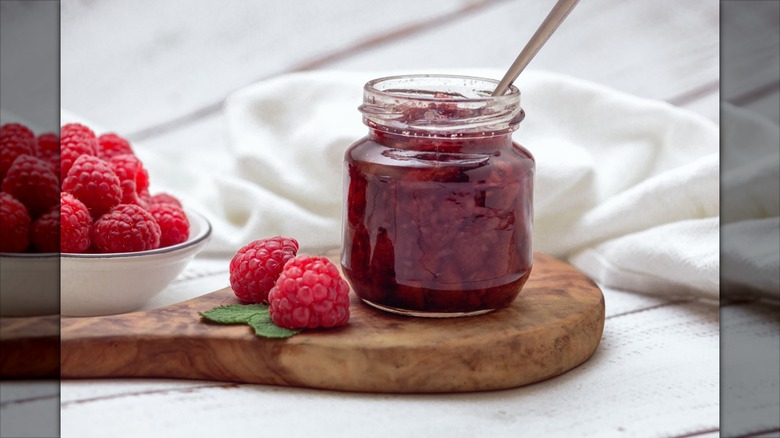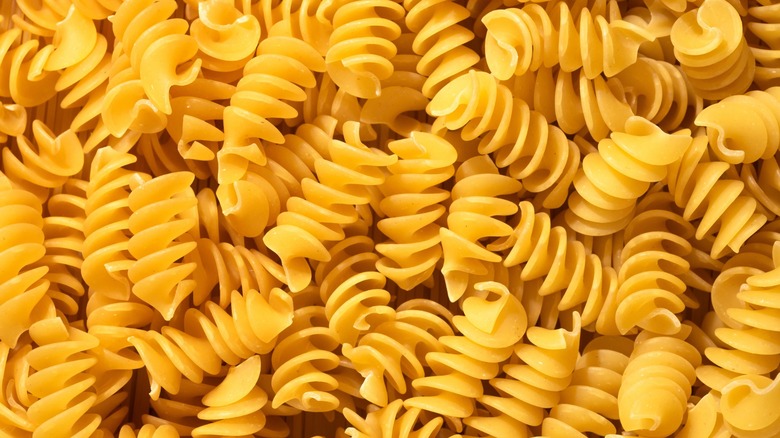Stop Throwing These 12 Foods Out: They Don't Expire As Fast As You Think
Before you toss that yogurt or panic over the "best by" date on your box of dried pasta, pause a moment and take a deep breath. Now, let your heart rate return to normal, because we have some good news: most of those dates aren't as dire as they seem! In fact, with just a few exceptions (baby formula among them), food dating in the U.S. generally isn't federally regulated. That means those little stamps ("use by," "sell by," and "best if used by") are usually more like suggestions, often referring to peak quality more than actual food safety.
You see, manufacturers set these dates to let you know when a product tastes its freshest, not necessarily when it becomes unsafe. So, while the flavor or texture might change a bit after that point, it doesn't automatically mean your food has turned into a lethal weapon overnight. It may even surprise you to learn that many items can last far beyond their printed date when stored properly.
Unfortunately, confusion about these labels leads to tons of perfectly good food being tossed. We've all been a bit guilty of this before. You spot a date that's come and gone, and straight into the trash that item goes. The sad truth is that relying only on the calendar can waste money and food that's still completely fine. And while some foods are surprisingly forgiving, others really do have limits, so let's break down 12 common foods that might be perfectly fine long after their so-called expiration date.
Raw honey
Move over, Twinkies, there's a food that can actually outlast civilizations to talk about now. Raw honey could essentially be considered the edible Energizer Bunny of pantry foods, with its staying power practically laughing in the face of expiration dates. This gloriously delicious golden goo may be our best friend, but it is quite an unwelcoming place for bacteria or mold to set up shop. In fact, archaeologists have discovered pots of honey in ancient Egyptian tombs that were still perfectly edible. If it can survive thousands of years in a tomb, we think it'll do just fine in your pantry.
Honey's secret? It's basically self-preserving, thanks to its low water and high sugar content, plus the fact it contains gluconic acid and hydrogen peroxide. As long as it's real honey, that is. (Those corn syrup–cut impostors won't fare quite as well). It also must be kept tightly sealed in a dry container. If those two criteria are met, it won't spoil. Like, ever. The only real danger to honey is moisture. Once water sneaks in, that natural preservation balance is thrown off. So, keep it sealed tight and away from humidity, and you'll have a sweet treat that outlasts every "best by" date that dares try to convince you your favorite goo is now a don't.
White rice
If there were a Hall of Fame for long-lasting pantry heroes, white rice could definitely be considered a candidate for MVP. It's simple, affordable, and when stored properly, nearly indestructible. The secret to its staying power lies in the milling process, which removes the natural oils found in the outer layers of the grain. Those oils are what make its brown rice counterpart spoil faster, so it just makes sense that once they're gone, the white version of rice can stay good for much longer. In fact, it can last for decades in a cool, dry, airtight container.
You heard that right. Whether it's jasmine, basmati, or good old-fashioned long-grain, white rice can sit quietly in your cupboard for as long as 30 years without losing the pep in its step. Just make sure it's kept away from moisture and pests, because little cabinet critters seem to love this staple starch. (We're looking at you, rice weevils.) So, if you've got a forgotten bag of white rice that got lost behind your pasta stash, don't toss it. It's probably still just as good as the day you bought it.
Eggs
Eggs are one of those foods that make us second-guess ourselves. You see the date on the carton while whipping up breakfast and panic that you may encounter an unpleasant surprise when you crack open the eggs for that omelet you woke up craving. But don't give up on your morning dream yet, as according to the USDA, eggs can stay fresh three to five weeks beyond their "sell by" date if stored properly in the fridge.
That may shock many of you. We were surprised, too! Apparently, the key is understanding the carton's codes. The pack date (a three-digit number from 001 to 365) shows the day the eggs were packaged (for example, January 1 is 001 and December 31 is 365), while the "sell-by" and "use-by" dates are more about quality than safety. Eggs are often shelved just days after being laid, so they're usually much fresher than we realize.
When in doubt, experts suggest consumers try what they call the float test. Place an egg in a bowl of cold water. If it sinks, it's fresh. If it stands up, it's aging but still usable. And, if it floats, it's time to say goodbye. In summary, your senses and a quick water test are more reliable than any printed date, so in this rare case, that label is not always eggs-actly as it seems.
Hard cheese
When it comes to expiration dates, you could say cheddar doesn't scare easily. Neither does Parmesan, Asiago, or Romano, for that matter. That's because hard and semi-hard cheeses are naturally long-lasting thanks to their low moisture content and aging process. While soft cheeses like Brie or feta can turn more quickly, hard cheeses can stay good for months past the "best by" date when properly stored.
So, if you notice a bit of mold on your favorite hunk (of cheese, not human), don't panic! Simply slice off at least an inch around the moldy spot, and the rest is still fine to eat. The reason for this is that the firm texture and high salt levels of hard cheeses make it tough for bacteria to penetrate deep into the block.
A lesser-known fact is that when stored at or below 40 degrees Fahrenheit, many of these cheeses can stay delicious for weeks (or even up to four months) beyond the printed date. So, if you find an old slab of Parmesan sneakily hiding behind the yogurt, don't toss it just yet. Hard cheeses age gracefully, and still have a lot of life and good taste in them beyond what some stamp may say.
Milk
Milk may not last forever, but it's not quite as fragile as most people think. Case in point? That "sell by" date you see stamped on your carton is more of a guideline than a full-on red alert. This just goes to show that if you've kept it cold (and hopefully stored it in the back of the fridge where temperatures are most consistent), milk can stay fresh for several days past its printed date.
If you are still in doubt, the surprisingly best tool in your should-I-be-alarmed arsenal is your nose. If it smells fine, it likely is. Science backs this up. You see, pasteurized milk does indeed spoil when bacteria multiply, but refrigeration slows that process way down.
Of course, if any milk smells sour, shows clear signs of curdling, or just tastes off, that's your cue to pour it out. Otherwise, a quiet week past the "sell by" date won't hurt anyone. To help you remember this in a fun way, maybe just think of milk as the dairy diva of the fridge. She just needs consistent chill time to keep on performing like a star.
Yogurt
You have made the commitment to good health and filled that refrigerator with the yummiest yogurt brands that use real fruit. Look at you, rockstar! But then you go to peel back that lid on your favorite Greek treat, and you see that expiration date (two days past now) screaming at you. But do not fret: That yogurt might have more staying power than you think.
If continuously refrigerated, unopened yogurt can stay safe for one to two weeks beyond the purchase date. The reason for this is that yogurt's natural acidity and live cultures act like tiny security guards, helping ward off harmful microbes for a while longer. It's still best to enjoy yogurt within two weeks of purchase for optimal quality, but you don't have to panic if you miss that window by a few days. That being said, you are probably still wondering where to draw the line. How do you know when to toss it? The short answer: Trust your senses. Much like milk, if it's developed mold, a curdled texture, or a sour, not-so-nice smell, it's time to kiss that tub goodbye.
Butter
When it comes to sweating over expiration dates, butter might just be one of the chillest items in your fridge. Thanks to its high fat and relatively low water content, butter doesn't spoil quite as quickly as some other dairy products. That means that your favorite cow cream can last months past its printed date if stored correctly. And if you have a preference for salted butter, that has an even longer life, since salt is basically nature's OG preservative.
"Best by" dates on butter are quality guides, not necessarily hard expiration deadlines. The trick is to keep it refrigerated and tightly wrapped, and you'll be slathering it on as a delicious biscuit topping or coupling it up with its perfect toast companions for several months (or even a full year if kept in the freezer). That's longer than most relationships these days, if we are being honest!
When all else fails, your nose, eyes, and taste buds will be your reliable guides for how to tell if your butter's gone rogue. Check for discoloration, an unpleasantly sour smell, or just flavors that taste odd or "off." In most cases, that "expired" stick is still perfectly fine to keep spreading.
Mayonnaise
Maybe add this next one to the list of mayonnaise mistakes you need to avoid making. In the array of condiments that adorn your fridge shelves, you may assume mayo is among the most vulnerable to the scourge of spoilage. It may surprise you to learn that mayonnaise actually holds up surprisingly well. The explanation for this is directly correlated to the fact that mayo is made from oil, egg yolks, and vinegar or lemon juice. This means this stable emulsion has a low pH that keeps it safe from most bacteria that would cause it to spoil prematurely.
Standardly, once opened and refrigerated, store-bought mayo lasts about two to three months. As for unopened jars, they can last for a year or more in your pantry. So, just remember that once that seal is opened, the clock starts ticking. To help keep your mayo lasting as long as possible, keep the container tightly closed and store it below 40 degrees Fahrenheit for a creamy condiment that can and will defy its "best by" date. That said, all good things must come to an end eventually, and when your mayo starts to separate, discolor, or develop an unpleasant odor, that's your neon sign to say farewell.
Ketchup and mustard
Now, while we may not be able to end the heated debate over what the ideal condiments are on a hot dog, we can tell you that the most common duo (ketchup and mustard) puts the rest to shame. At least when it comes to expiration dates, that is. Ketchup can thank its high acidity for making it a hostile environment for bacteria (allowing an opened bottle to last about six months in the fridge, or a month in the pantry). Mustard takes things even further thanks to the presence of allyl isothiocyanate, which boasts natural antimicrobial properties, keeping the condiment safe for up to a year in the refrigerator once opened.
Both condiments are all about that pH balance. You should still store this pair of hot dog toppings in the fridge at 40 degrees Fahrenheit or below to ensure the best flavor and texture for the long haul. Over time, you might see a little liquid separation or color fading. That's normal, not dangerous. However, if the ketchup turns brownish or the mustard starts to smell off, that is when to toss those toppings.
Jams and jellies
We have previously provided you with a comprehensive breakdown of the differences between jams, jellies, marmalades, preserves, and compotes, but what about when you start to wonder when these yummy, fruity condiments have passed their prime? Keep reading, because Nana was onto something. Jams and jellies are basically sugar-powered preservation miracles in cute little pots.
Thanks to their high sugar and acid content, unopened jars of jams and jellies can sit pretty as you please in your pantry for at least a year. Once they've been opened, exposed to air, and refrigerated, they'll last six months or more, as long as they're tightly sealed. Science explains this phenomenon, pointing to the fact that sugar binds to the water, which means bacteria can't grow easily in these oh-so-sweet spreads. Heat processing during production also kills off most microorganisms, giving these toppings impressive staying power.
The longevity of homemade versions may vary, depending on how they're sealed, but properly canned jam is said to be good for a full year, or even two when opened. If it's been opened, it will last for around six months. When you do start looking for signs of spoilage, be on the alert for yeasty smells, separation, or fuzzy white mold on the surface (fuzzy fur is only cute on your teddy bear). While you can sometimes safely scrape off surface mold from high-sugar jams, when in doubt, just toss it out.
Dried pasta
That unopened box of spaghetti in your pantry has extra-strong staying power. That dried pasta could last up to three years once secured on your home shelf. Technically, it's probably okay to eat well past that point, although it will have likely degraded in quality. How can this possibly be? Well, dried pasta is a low-moisture food, which means it doesn't support bacterial growth and can safely last years past its "best by" date, if stored properly.
This proper storage would include keeping it in a cool, dry place and in an airtight container to prevent pantry pests from chowing down on your chosen grub before you can. With that in mind, a good rule of thumb for how to store dried pasta that comes in boxes or opened bags is to transfer it to a sealed container to ensure it stays fresh longer and safe from the shelf scavengers.
As we said, even after several years, pasta remains safe. Taste, on the other hand, matters, and consumers will eventually start to see a dip in flavor. And not all dried pastas are the same. Gluten-free or egg-based pastas may prove slightly less resilient.
Dried beans
And there you have it. You have finally gotten around to cleaning your pantry, only to stumble upon that forgotten bag of dried beans that has apparently been hulking in the shadows of your shelves since your pandemic-era panic purchases circa 2020. The good news is that, unlike your patience in the midst of pantry cleaning, dried beans are blessed with lengthy shelf lives. They actually have the ability to last a decade or more if stored correctly in sealed containers in a cool, dark place.
However, it is worth noting that, in terms of nutritional value and taste quality, they tend to gradually decline after several years on the shelf. As for storage, a good strategy is to avoid storing beans in their original thin plastic bags, opting instead for airtight jars or sealed bags to prevent unwanted moisture and pests from invading. And those red flags signaling it is time to break up with your beans? If mold, funky scents, or bugs hit the scene, feel free to confidently say, "It's 'bean' fun, but buh-bye!"


